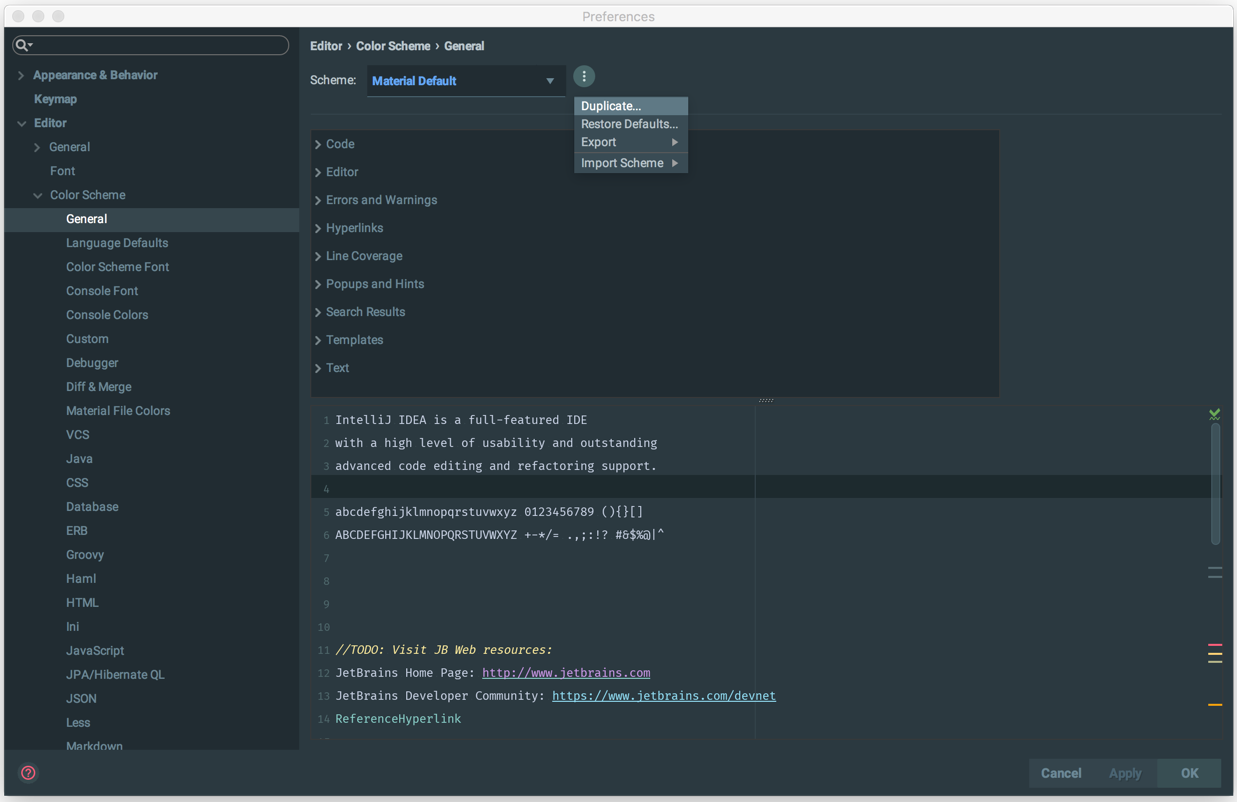

If you want to opt-out of highlighting a element that inherits its language, you can add the language-none class to it. This way, you can also define a document-wide default language, by adding a language-xxxx class on the or element. Therefore, if multiple elements have the same language, you can add the language-xxxx class on one of their common ancestors. To make things easier however, Prism assumes that the language class is inherited. If you have large portions of HTML code, you can use the Unescaped Markup plugin to work around this. Note: You have to escape all elements (code blocks and inline snippets) with < and & respectively, or else the browser might interpret them as an HTML tag or entity. (both for semantics and for Prism) is a element with a element inside, like so: p
#Matlab editor visual studio dark theme code#
The recommended way to mark up a code block Therefore, it only works with elements, since marking up code without a element is semantically invalid.Īccording to the HTML5 spec, the recommended way to define a code language is a language-xxxx class, which is what Prism uses.Īlternatively, Prism also supports a shorter version: lang-xxxx. Prism does its best to encourage good authoring practices. You will need to include the prism.css and prism.js files you downloaded in your page. If someone can read code, they are probably in the 95% of the population with a modern browser.

It doesn’t force you to use any Prism-specific markup, not even a Prism-specific class name, only standard markup you should be using anyway.Highlights inline code as well, not just code blocks.CSS inside HTML, JavaScript inside HTML). Wide browser support: Edge, IE11, Firefox, Chrome, Safari, Opera, most mobile browsers.All styling is done through CSS, with sensible class names rather than ugly, namespaced, abbreviated nonsense.The only thing you need is a good understanding of regular expressions. Multiple hooks are scattered throughout the source. Very easy to extend without modifying the code, due to Prism’s plugin architecture.Supports parallelism with Web Workers, if available.This means that if multiple code snippets have the same language, you can just define it once,in one of their common ancestors. In addition, the language is defined through the way recommended in the HTML5 draft: through a language-xxxx class. On its own for inline code, or inside a for blocks of code. Prism forces you to use the correct element for marking up code. Other highlighters encourage or even force you to use elements that are semantically wrong, Each language definition adds roughly 300-500 bytes. If you’re still not sold, you can view more examples or try it out for yourself.

This page’s logo (SVG), highlighted with Prism: This page’s HTML, highlighted with Prism: This page’s CSS code, highlighted with Prism: The Prism source, highlighted with Prism (don’t you just love how meta this is?):


 0 kommentar(er)
0 kommentar(er)
